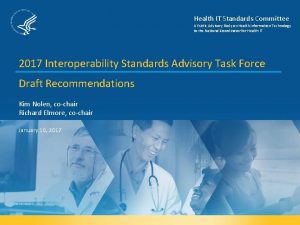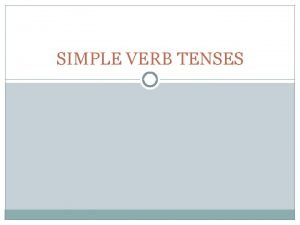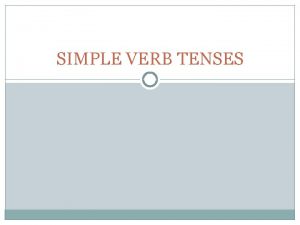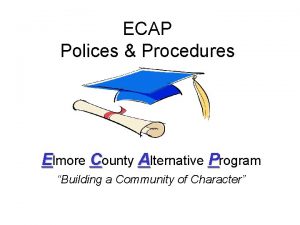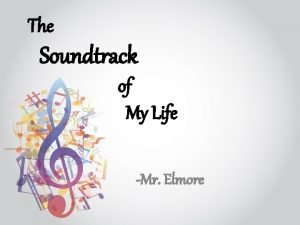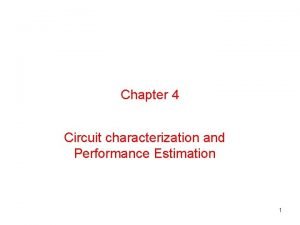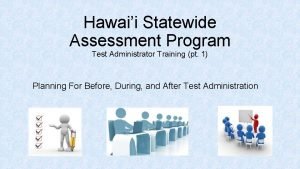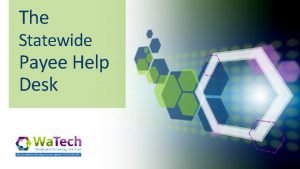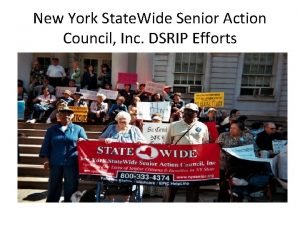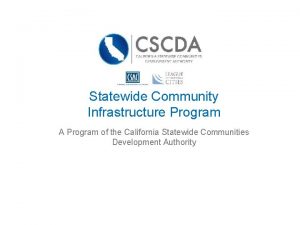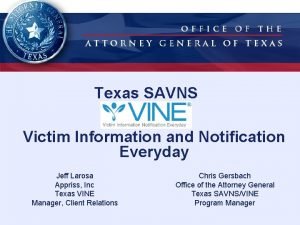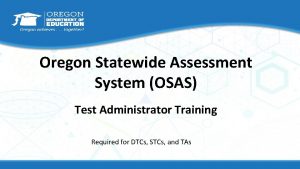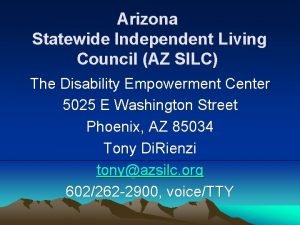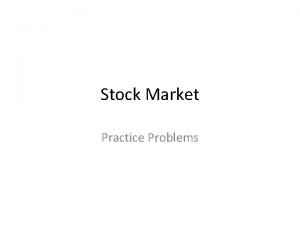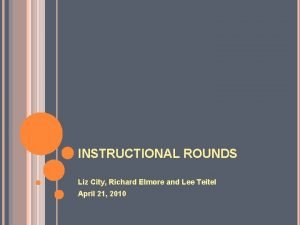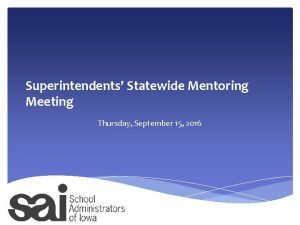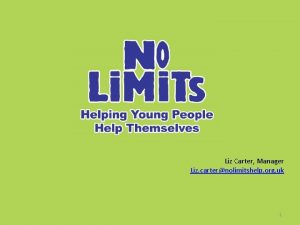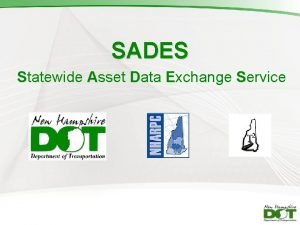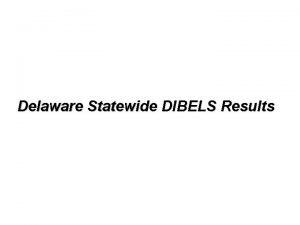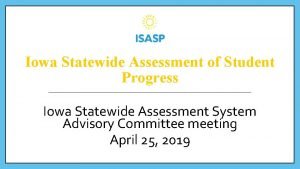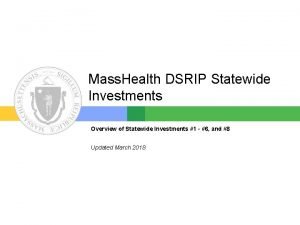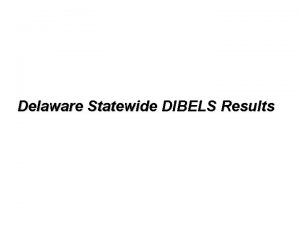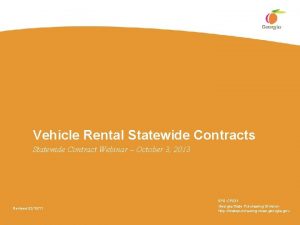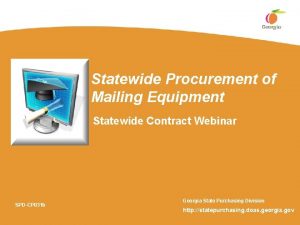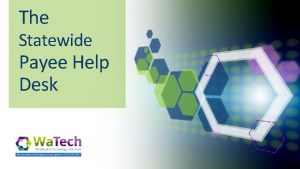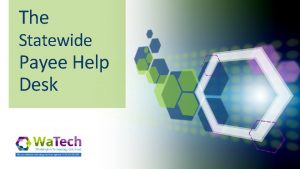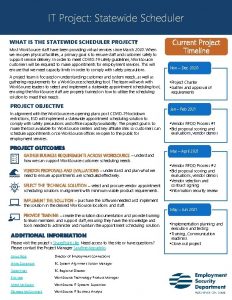Superintendents Network Statewide Meeting Richard Elmore and Liz



























- Slides: 27

Superintendents’ Network Statewide Meeting Richard Elmore and Liz City April 18, 2012

Being strategic 3 questions: What, Why, How From Strategy in Action, R. E. Curtis and E. A. City, Harvard Education Press, 2009.

Learning Goals for Today • Understand rounds as a LEARNING practice • Understand how rounds connects strategy and practice on the ground • Understand the diagnostic power of variability • Be able to dig beneath rounds data and use that data to provide developmental feedback on your strategy

Agenda • • • Framing: Strategy, Rounds, Learning Artifacts: Symptoms and hypotheses Break Digging below the surface: Root cause analysis Lunch A developmental framework for schools Break Network time: Applying learning from the day Wrap up: Commit to a question

Strategy Warm-Up • 1 min. : Prepare to describe your system’s strategy for ensuring that every learner fulfills her/his potential • Find someone from another district whom you don’t know well; introduce yourself • 1 min. : Each of you describes your system’s strategy. Your partner’s responsibility is to ask one clarifying question. (~30 seconds each) • Find another person you don’t know well and repeat • Rejoin your team. Repeat in triads.

Strategy—What? • Stacey Childress’s definition: “The set of actions an organization chooses to pursue in order to achieve its objectives. These deliberate actions are puzzle pieces that fit together to create a clear picture of how the people, activities, and resources of an organization can work effectively to accomplish a collective purpose. ” --quoted in Strategy in Action, p. 3

Strategy—What? In your own words • How would you define strategy in your own words? • Write a definition • Placing bets

Strategy--Why? • Forces us to prioritize and make choices about what to do and not do • Allows us to marshal resources • Focuses the system’s work and reduces “noise” • Helps the system move from where it is today to the audacious vision you have for children

What good strategy is: • A few, key carefully considered things to focus the system’s work on that, when put together, create a powerful engine for systemic improvement • A series of well-informed, well-educated bets • It addresses the instructional core • It balances problem solving with pursuing a vision • It is developed in partnership; many people feel a sense of ownership of it—you can ask anyone in the system, and they’ll tell you what it is • It evolves based on progress made, results, and learning • If you can’t see it in the classroom, it’s not there

What good strategy is not: • Everything the system does • Everything everyone wants the system to do • A sure thing • Something static • A piece of paper, brochure, wall chart

How does rounds connect to strategy? • Learning – Students learn best when. . . – Teachers learn best when. . . – Leaders learn best when. . . • Every strategy has an implicit learning theory • Rounds exposes that theory to inquiry and learning • The best strategies improve over time

Geoff Norman http: //gk. oeghd. at/grako 14/resour ces/Norman_l 1. pdf https: //videos. med. wisc. edu/video s/8100

Artifacts • Take out your rounds artifacts • What do you see? • What’s the emerging evidence of what’s happening in your system? • What are your hypotheses about what’s causing what you see in classrooms?

Symptoms and Hypotheses • Symptom: Low-level tasks • Hypotheses: – Easy to grade – How people were trained – What’s in the book – Helps kids feel good • Success on stand tests – Quieter is better • Teachers have answers to tasks • No time for conversation about tasks • Loss of control when tasks change • Control of class • Learning is predictable • No reason to change • Prior training

No time for conversation about tasks five whys • Not a priority – Too much content to cover • We haven’t said what is important – Lack of agreement » Action: What will we do to reach agreement? » Issues of control?

Lack of Agreement? • Different philosophies about teaching and learning • Different expectations for student learning • Haven’t taken the time to establish agreement – Avoidance behavior? • This too shall pass; learned helplessness

Low-Level Tasks—Why? • Teachers have answers to tasks • No time for conversation about tasks • Loss of control when tasks change

Root cause analysis: 5 Whys Hypothesis: WHY? Why? Why?

Lunch

So what? • Symptom: • Hypothesis: • . . . Why? • So what for rounds? . . . • So what for strategy? . . .

A Developmental Perspective on Rounds and School Improvement • How do you choose to focus your use of rounds for maximum impact on improvement of learning? • How do you accommodate to important differences among schools– in rounds? in support? • How do you use rounds to make binding commitments to the next level of work?

Key Assumptions • Every school is different, but the overall strategy applies to all schools • Improvement is growth– growth is a process, not an event • Development occurs on multiple dimensions over time • Tailored solutions to specific problems



Break www. serpinstitute. org Victoria: “performance and development culture” in Victoria Department of Education

Network Time Given your artifacts and your data from rounds, consider: • What are the connections between rounds and strategy? • What are the missing pieces and big holes? • What’s the next level of work for our network? Hint: Your theory of action and data from rounds should be helpful here. You may want to revise your theory of action based on your conversation.

Wrap-up • Based on your learning today, what’s one question your network will commit to investigating?
 Richard elmore allscripts
Richard elmore allscripts Richard elmore harvard
Richard elmore harvard New york state county highway superintendents association
New york state county highway superintendents association Judy and liz at last month's meeting? *
Judy and liz at last month's meeting? * Ann handball very well
Ann handball very well Looking for richard
Looking for richard Statewide construction and development
Statewide construction and development Elmore county alternative school
Elmore county alternative school Elmore vision motion picture soundtracks love yourself
Elmore vision motion picture soundtracks love yourself Elmore
Elmore Elmore delay
Elmore delay Zene optical
Zene optical What is meeting and types of meeting
What is meeting and types of meeting What is meeting and types of meeting
What is meeting and types of meeting Sba testing hawaii
Sba testing hawaii Statewide vendor number
Statewide vendor number Statewide health insurance benefits advisors
Statewide health insurance benefits advisors New york statewide senior action council
New york statewide senior action council Statewide community infrastructure program
Statewide community infrastructure program Statewide laundry
Statewide laundry Vinelink texas statewide
Vinelink texas statewide Statewide benefits
Statewide benefits Osas test administration manual
Osas test administration manual Ctsavin
Ctsavin Arizona statewide independent living council
Arizona statewide independent living council For todays meeting
For todays meeting Proposal kickoff meeting agenda
Proposal kickoff meeting agenda Definition of vocabulary
Definition of vocabulary
